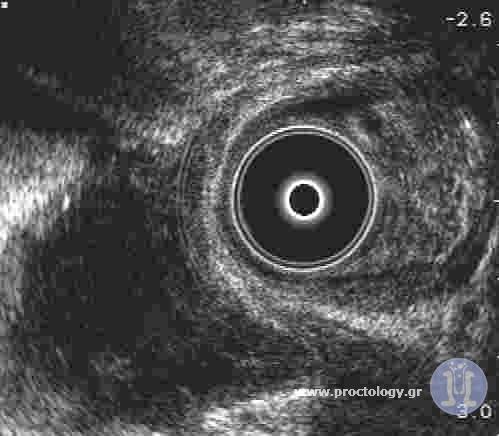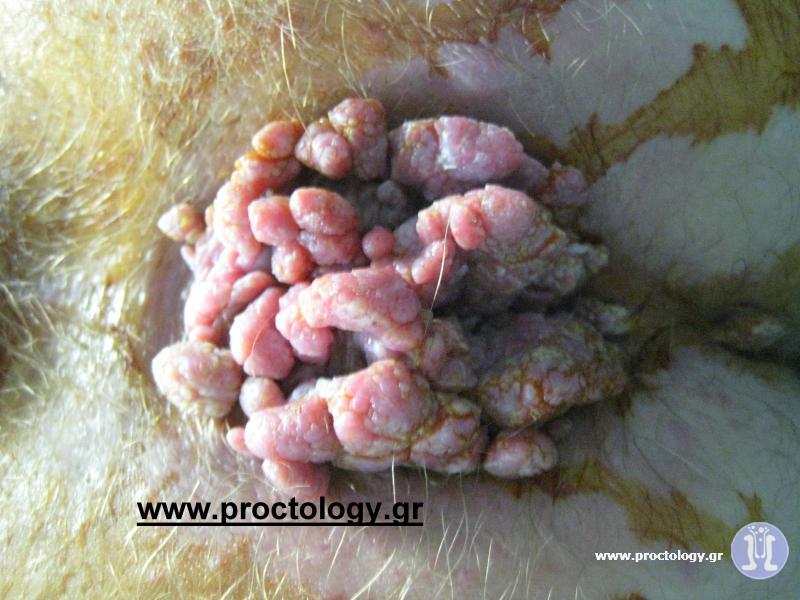 Hemorrhoids
Hemorrhoids
What are hemorrhoids?
Hemorrhoids are blood filled cushings, which protrude outside anus and may cause significant complaints, such as bleeding and pain. These symptoms may have negative impact on the patient’s life quality.
The anal canal is full of blood filled structures (hemorrhoids) which contribute to normal defecation and stool retention. Intense defecation efforts and straining weaken the fibrous supports tethering hemorrhoids to the surrounding structures. As consequence, hemorrhoids hang out of the anus and swell as they engorge with blood. Later, hemorrhoids bleed and cause pain, discharge, itching and may enlarge excessively.
The usual cause of hemorrhoids is sitting on the toilet for more than five minutes, constipation or intense straining during defecation efforts. If hemorrhoids stay outside anal canal, blood’s return is obstructed, and they become gradually engorged with blood and swollen. Other causes of hemorrhoids are the longtime upright standing, vigorous exercising, squats, obesity and pregnancy.
Symptoms
Hemorrhoids appear as a swelling lump out of anus. Piles can reach quite large dimensions. Another quite often symptom is bleeding. Thrombosis of piles cause transitory extreme pain due to blood stasis which is not permanent.
The abovementioned symptoms may also be caused by other diseases, which may be as well as important, and should be immediately treated. For example, bloody stools can be observed in case of anal fissure but also by other bowel disorders, such as diverticolosis, colitis, or bowel tumors. A hard-protruding mass outside the anus may be also cancer. Presence of constant anal pain, especially after defecation, may be a sign of fissure, infection as well as inflammation.
In any case, a visit to a proctologist is essential in order to obtain a correct diagnosis of any disturbing condition. The investigation of anal canal diseases and in addition the use of diagnostic techniques require personal diligence by the side of the doctor. The clinical examination in combination with proctoscopy, high resolution anoscopy and endoanal ultrasound are the key diagnostic tools. In particular, blood in the stools is a very important finding, which must necessarily be investigated with endoscopy. Other diseases can be also diagnosed with the utilization of endoanal ultrasound.
Diagnosis / Stages
Symptoms, such as protruding masses, blood at the stool or pain may be produced by hemorrhoids or other more serious conditions. A visit to a proctologist is mandatory. Internal hemorrhoids cannot be diagnosed with finger examination only. Proctoscopy must be done in order to determine the size and the exact location of the hemorrhoids.
If patients have a feeling of bloating in the anus or a feeling of incomplete evacuation, a proctoscopy should be performed (simply by asking the patient to bear down) so as to diagnose internal bowel prolapse. This particular medical condition is caused by continuous defecation attempts or bowel inflammation.
The current classification of the hemorrhoids in four stages, has a limited correlation with the severity of the disease. For instance, there might be large second-degree hemorrhoids that can cause significant bleeding and fourth-degree hemorrhoids that do not require any intervention. External bulges often consist of skin only and do not require any treatment, but they are sometimes resected for aesthetic or hygiene purposes. First-degree hemorrhoids stay inside anal canal and do not require any treatment. Hemorrhoids that come out and automatically go back by themselves are classified as second-degree and should be treated surgically only if they bleed. Rubber band ligation is a very popular and convenient method of treatment second degree hemorrhoids, albeit of no financial interest to the surgeon. Hemorrhoids that return into the anal canal by pushing back by hand (third-degree) and hemorrhoids that remain permanently out (fourth-degree) are treated surgically only if they bleed or cause other symptoms.
Cure / Treatment
If somebody is diagnosed with hemorrhoids, he should at first instance correct his faulty defecation habits. Nobody should be operated for hemorrhoids, before he stops playing with his cell phone or read books at the toilet. It is very simple and important to correct faulty defecation habits before proceeding to any surgical operation. Constipation can be corrected with proper nutrition (fruits and vegetables, plenty of water) and laxatives. Toilet paper, wet handkerchiefs and soap at the anus should be avoided. If the above measures do not help, an invasive approach may be indicated.
A lot of over-the-counter creams may alleviate symptoms. Hemorrhoidopathy is a common disease and its invasive treatment has drawn interest from a medical or financial point of view. There are many forms of invasive treatment. Simple and cheap treatments do not have any financial interest and are not often suggested. Rubber band ligation is performed without any anesthesia in less than 10 minutes, at the outpatient clinic, with excellent results in selected cases of second-degree or third-degree hemorrhoids. Pain post rubber band ligation is due to poor technique or due to hemorrhoids unsuitable to this procedure. In the recent twenty years, more than 20 techniques and devices have been proposed for the treatment of hemorrhoids (Longo, HAL, THD, Rafaelo, laser, etc.). Some of them were used as advertising “banner”. The proctologist-surgeon should master at least 4-5 techniques and select the appropriate technique or any combination of above according the individual needs of each case. Preoperatively, it is mandatory to recommend the correction of bad defecation habits.
The postoperative pain is minimal after laser surgery. The old procedure of hemorrhoid resection is painful but effective. Post resection, recovery lasts at least a week; there is pain in defecation and a surgical wound with discharge. Even nowadays with so many new techniques, resection might be mandatory for durable treatment of severe cases.










